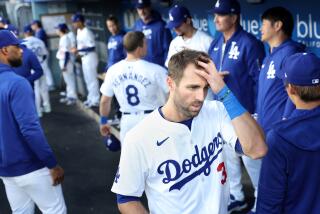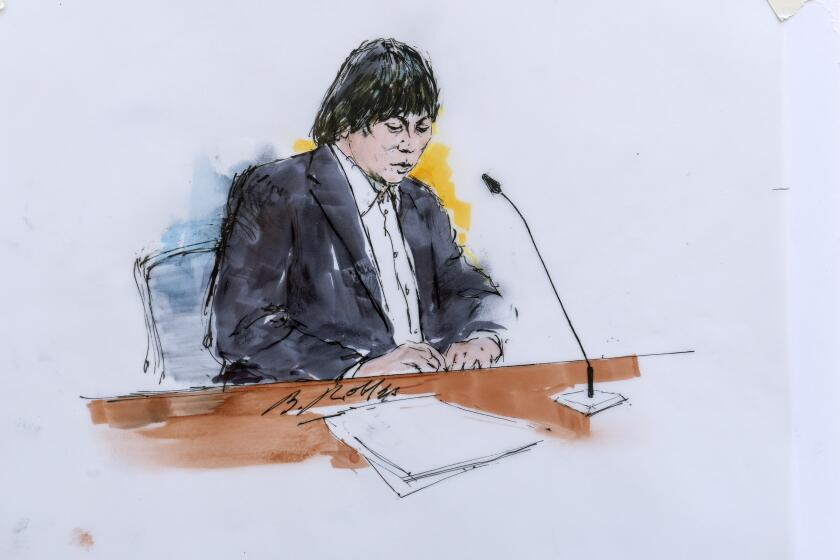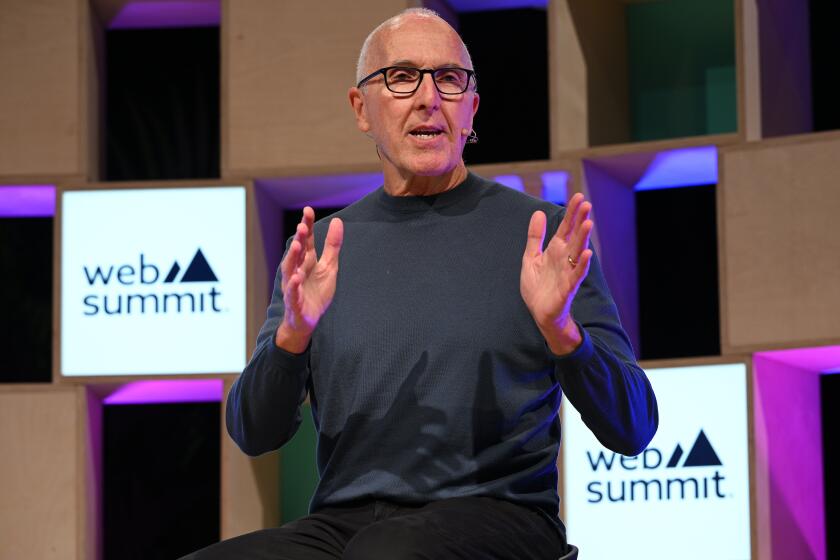Money Still Is There, but Few Now Pass ‘Go’ : Pro football: Caponomics, the science of winning within new salary limits, takes toll on the veterans.
It first appeared late last month, in the form of numbers and dollar signs, coldly typed across bottom lines throughout the NFL.
Officials and players looked at it, shivered, then turned quickly away.
“Can it really be this bad?” they wondered.
Soon they realized, it could hardly be any worse.
It is known as the salary cap. It has spread like a plague.
Veterans fell victim to it first, players who had survived years of on-field wars only to realize they were no match for the power of this numbers crunch.
Charles Mann. Duane Bickett. The entire starting wide receiver corps of the Indianapolis Colts. All were released to make room under the $34.2 million allotted each team.
Then it went after stars, the untouchables, those with big contracts and plenty of leverage.
One day John Elway was the hottest quarterback in the game. The next, he was offering to take a pay cut so the Denver Broncos could sign others.
Ronnie Lott did the same thing, with one appreciable difference. The New York Jets took Lott at his word. The plague cost him $325,000.
Then it struck teams, championship teams with strong foundations, knocking them down with the flick of a number.
The Buffalo Bills will be forced to pursue a fifth consecutive Super Bowl appearance this year without their best offensive lineman and their best defensive back.
Were it not for the salary cap, both Howard Ballard and Nate Odomes would still be in Buffalo today.
Two weeks ago, the plague even outdid its own unforgiving, indiscriminate self.
It wiped out an entire practice facility.
Until recently, classrooms have been empty and fields deserted at the San Francisco 49ers’ training site because, forced to pay players’ per-diem under the salary cap, the richest team in football has not had enough money to open them.
Officials from the union remind players of the 51% increase in salaries last season, and promise that the cap won’t be so crazy once everyone understands how it works.
“We’re just seeing general managers and agents trying to adjust,” said Mike Duberstein, director of research.
“A lot of these players might be cut anyway, it’s just happening earlier now. And a lot are being told to hang around until their teams can make room.”
But, as many had predicted last year, when the players’ union agreed to a salary cap so they could get free agency, last spring’s wealth has been replaced by this spring’s worries.
Talk of who is getting a new job and a raise has been replaced by talk about who has been fired.
Reggie Langhorne of the Colts got fired. All he did last year was set a franchise record with 85 catches.
Dennis Gibson got fired. He had been a starting linebacker for the Detroit Lions every season since 1987.
Defensive tackle Scott Mersereau and defensive back Clifford Hicks, both solid veterans, were fired by the New York Jets on the same day.
Their offense? They happened to have salaries which, combined, came within a few dollars of the salary the Jets had promised Donald Evans.
Evans, former Pittsburgh Steeler defensive end, signed with the Jets for a cap number of $1.167 million this season.
Mersereau and Hicks, scheduled to make a combined $1.125 million, were cut the next day.
“The new system has forced those in our office to come up with a new word, caponomics, “ agent Leigh Steinberg said. “With that word has come some tough times for a lot of people.”
More players have changed teams this year than last year at this time, 42-40.
But last year, honeymoon time for this new union contract, players were changing teams because they wanted to.
This year, standout safety Louis Oliver has gone from the contending Miami Dolphins to the Cincinnati Bengals only because the Dolphins decided that they could sign former Ram Michael Stewart and save $800,000.
The aging Redskins needed to save much more than that, so Mann hasn’t been the only casualty. Carl Banks and Tim McGee, two of their touted free-agent signings last year, were also cut.
Jeff Bostic, the last original Hog offensive lineman, was forced to retire.
“This has been very difficult,” said Charley Casserly, Redskin general manager. “You do some things you hate to do.”
It is going to be even tougher after the draft, when each team will have new players who will be wanting contracts that will force even more veterans out.
“The draft has become extremely important for one reason--cheaper players,” said Dick Steinberg, Jets’ vice president.
That is, if your favorite team can even participate in the draft. Under cap rules, each team must have $108,000 available for each player drafted.
Sources estimate that if the draft were conducted this week, some teams would have to cut more veterans before they could pick one player.
“This whole thing goes against your inner being,” said John Butler, Bill general manager who is considered one of the game’s best scouts.
Butler says he enjoys developing talent, and keeping that talent together, because he remembers what is was like to have heroes as a child.
“I still hope there exists a place where somebody can come in and play 10 years and be somebody’s hero,” Butler said. “But I don’t think that place exists anymore.”
Butler said it hurts to remember Ballard and Odomes, both Pro Bowl starters, saying they wanted to stay in Buffalo.
But to pay Ballard a fair salary, Butler said, he would have had to cut 10 other players.
“There are always guys you drop every year, but Ballard and Odomes are certainly not those kind of guys,” Butler said. “This hurts. It really hurts.”
Caponomics has also hurt the Los Angeles teams, although neither has lost a key player.
The Raiders have managed the cap better than most. Anybody notice that when they kept Tim Brown for $11 million, no big-name player lost his job?
But now they will almost certainly have to solve their running back problems through the draft if they are to remain under the cap.
“When we made that offer to Tim, we figured, we win either way,” said Wade Phillips, the Broncos’ coach whose team forced the Raiders’ hand by negotiating with Brown.
Having lost their practice facility, it figures the Rams could also lose their only locker room stability, veteran tackle Jackie Slater.
Slater wants to end his 18-year career here, but after making $1.1 million last year, he may be looking at more than a 50% pay cut. No wonder he is visiting the Atlanta Falcons this week.
“The game has become Monopoly--you only have so much money to play with, and that money determines everything you do,” said Jim Miller, vice president of the New Orleans Saints.
It is no surprise that the Jacksonville Jaguars announced last week that they have hired former management guru John Jones for a single task:
Figure out the salary cap.
And the plague continues.
Talk of Warren Moon being traded because the Houston Oilers cannot afford two $3-million quarterbacks.
Rich Camarillo, Pro Bowl punter, being cut by the Arizona Cardinals because Coach Buddy Ryan says, “Hell, why pay somebody $900,000 when you can get somebody else for $275,000?”
Is it any wonder that Greg Davis, standout Cardinal kicker, needed to ask a question before agreeing to a recent interview?
“I just want to know one thing first,” he said. “Do I still have my job?”
More to Read
Get our high school sports newsletter
Prep Rally is devoted to the SoCal high school sports experience, bringing you scores, stories and a behind-the-scenes look at what makes prep sports so popular.
You may occasionally receive promotional content from the Los Angeles Times.







